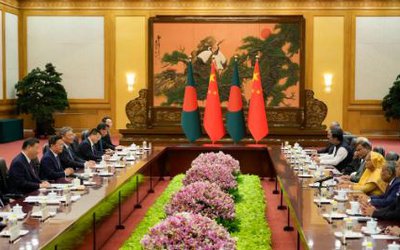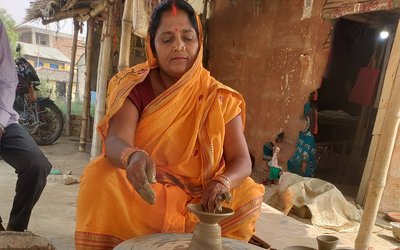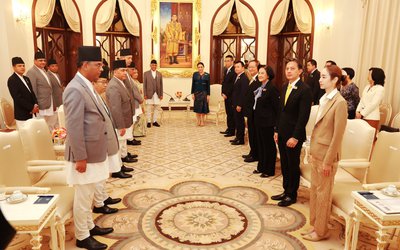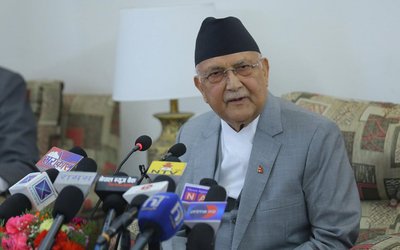
On the World Refugee Day on June 20th, a few articles appeared in the media about the Bhutanese refugees still remaining in the camps in Nepal and about the ordeals faced by the Refugees before they were settled in third countries.
There are still 7000 and odd refugees remaining in two camps in Beldangi and Sanichare?. They were the ones who for a variety of reasons did not apply for resettlement in the hope that they will be repatriated to Bhutan and this also includes some who have been refused resettlement.
The UNHCR has already warned that it is in the process of shutting down the two camps though this does not appear to be imminent.
Of the 113,000 refugees who opted for resettlement, the bulk of them- 96000 have been taken in by the US and it is said that the US will not take any more of the refugees. While there is no information of those resettled elsewhere in Australia, Canada, Denmark, Netherlands, New Zealand, Norway and United Kingdom, there is some information about those in USA. While the first and the second generation are not happy having been uprooted from their cultural environment, it is those who were born in the camps and who have no idea of what southern Bhutan was like, have taken a liking to the new surroundings, learning new skills and have generally adapted themselves.
It was nice that some of the refugees who have done well financially in their new environment have made a call to help other refugees with whatever contributions they can make towards their cause.
In the beginning of this year, there were reports that Nepal has desired for further talks with Bhutan over the repatriation of the remaining refugees still in the camps in Nepal.
Earlier there were 16 rounds of bilateral talks between the two countries over a period of 20 years and the talks yielded nothing. In fact, the Joint Verification had identified after verification of over 12,000 refugees in the Khudenabari camp, of over 200 refugees as legitimate citizens of Bhutan having valid documents coming under Category I. Even among these not one of the refugees was taken back to Bhutan.
In fact the bilateral talks and the Joint verification team stopped verification abruptly in 2004 on a small incident where the Bhutanese team was said to have been attacked by the refugees. The provocation of course was from the Bhutanese officials of the Joint Verification Team.
The composition of the remaining 7000 and odd refugees still in the camps is not known. It is said that it consists mostly of elderly people and children. Full details should be available with the UNHCR.
What is known however is that the Nepal Government has categorically declined to absorb the remaining refugees in Nepal itself. This is rather unfortunate although this appears to be the best solution to those still remaining in the camps. If these refugees – some may be of political parties too- are hoping to return to Bhutan with dignity- it is not likely to happen.
As I had predicted right in the beginning many-many years ago, Bhutan is unlikely to take even a single refugee back from the camps and this stalemate will continue. There is no country in the World including India which can pressurize Bhutan to take back the remaining refugees! It is unfortunate and unfair too. But this is the reality.
It is said that Nepal is reluctant to absorb the remaining refugees as this may encourage Bhutan to drive away the remaining 80,000 Lhotsampas still living in southern Bhutan. This is not true.
The worry for Bhutan is the “ethnic imbalance” that will be created with southerners growing at a faster pace and overwhelming the other two indigenous northern communities.
This happened in Sikkim where the Nepali community had completely overwhelmed the Lepcha and Bhutia communities.
It looks that Bhutan is comfortable with the present ethnic proportion and so may not move for further reduction of Lhotsampas!
What is unsaid and perhaps forgotten is the presence of a large number of unregistered southern Bhutanese in India, mostly in Assam and West Bengal and perhaps widespread all over India. It is also said that some of the elderly persons who were resettled elsewhere in third countries may have quietly retuned to India. Estimates vary as to many belong to this category in India. It could be anywhere between 15,000 to 30,000. These consist of three categories.
Those who came directly from Bhutan to India unnoticed by the Indian security authorities and have quietly settled down with the help of their relatives.
Those who stayed in the camps for a while and left for India after getting disenchanted with life in the camps.
Those who were not considered for resettlement and thus trapped in the camps.
These refugees have no refugee status and have been living on the margins of the society without citizenship and without any legal status.
These poor refugees are likely to be exploited by criminal elements if it had not happened so far. India should take the responsibility and initiate steps to regularize their stay and give them a “life with dignity”. This is the least India can do for the unfortunate people- refugees of Bhutan who were driven out of their homes and forced to live a life of anonymity.
The views expressed here is of authors. Courtesy: SAAG
Dr. S. Chandrasekharan
Dr. S. Chandrasekharan is an security experts of India, writes on regional security issue.
- Nepal: Five Months of Oli’s Rule: A Disappointment?
- Aug 12, 2018














